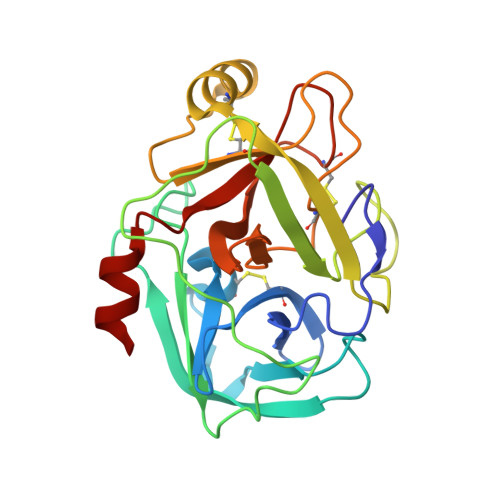Structural plasticity and thermal stability of the histone-like protein from Spiroplasma melliferum are due to phenylalanine insertions into the conservative scaffold.
Timofeev, V.I., Altukhov, D.A., Talyzina, A.A., Agapova, Y.K., Vlaskina, A.V., Korzhenevskiy, D.A., Kleymenov, S.Y., Bocharov, E.V., Rakitina, T.V.(2018) J Biomol Struct Dyn 36: 4392-4404
- PubMed: 29283021
- DOI: https://doi.org/10.1080/07391102.2017.1417162
- Primary Citation of Related Structures:
5OGU, 7PZO - PubMed Abstract:
The histone-like (HU) protein is one of the major nucleoid-associated proteins of the bacterial nucleoid, which shares high sequence and structural similarity with IHF but differs from the latter in DNA-specificity. Here, we perform an analysis of structural-dynamic properties of HU protein from Spiroplasma melliferum and compare its behavior in solution to that of another mycoplasmal HU from Mycoplasma gallisepticum. The high-resolution heteronuclear NMR spectroscopy was coupled with molecular-dynamics study and comparative analysis of thermal denaturation of both mycoplasmal HU proteins. We suggest that stacking interactions in two aromatic clusters in the HUSpm dimeric interface determine not only high thermal stability of the protein, but also its structural plasticity experimentally observed as slow conformational exchange. One of these two centers of stacking interactions is highly conserved among the known HU and IHF proteins. Second aromatic core described recently in IHFs and IHF-like proteins is considered as a discriminating feature of IHFs. We performed an electromobility shift assay to confirm high affinities of HUSpm to both normal and distorted dsDNA, which are the characteristics of HU protein. MD simulations of HUSpm with alanine mutations of the residues forming the non-conserved aromatic cluster demonstrate its role in dimer stabilization, as both partial and complete distortion of the cluster enhances local flexibility of HUSpm.
Organizational Affiliation:
a National Research Centre 'Kurchatov Institute', Kurchatov Complex of NBICS-Technologies , Akad. Kurchatova sqr., 1, Moscow 123182 , Russian Federation.















